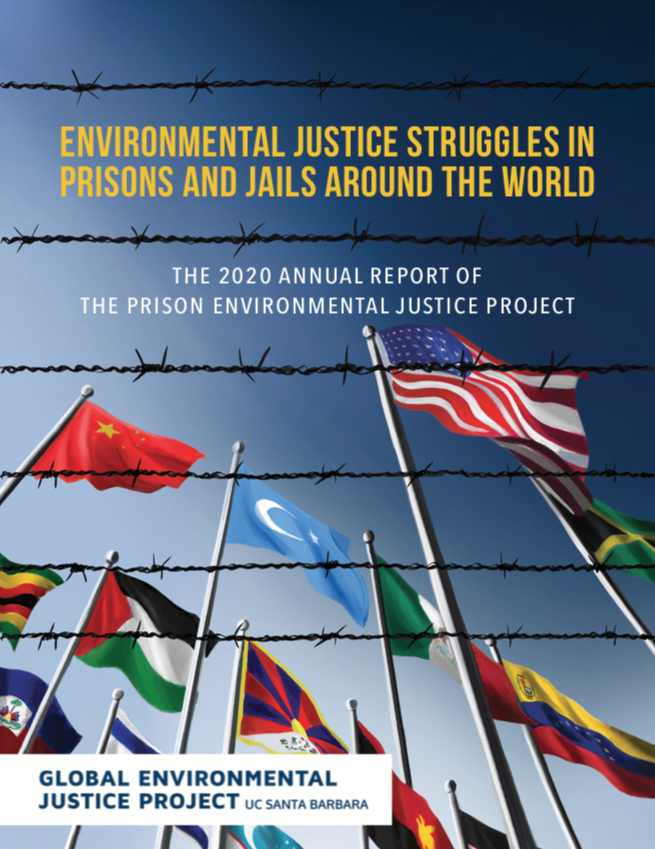Environmental Justice Struggles in Prisons and Jails Around the World
The Global Environmental Justice Project, led by Environmental Studies professor David Pellow, publishes its latest annual report of its Prison Ecology Project.
Executive Summary of the 2020 Annual Report of The Prison Environmental Justice Project:
Prisons and jails around the globe are sites of heart-wrenching, stomach-turning violence and brutality, perpetrated by the governments and corporations that build and manage them. These abuses intersect with and reinforce a myriad of environmental injustices. Specifically, the evidence of water contamination, air pollution exposure, poor nutrition and woefully inadequate medical care, torture and neglect in carceral facilities around the world is widespread and overwhelming. What we document in this report are the many ways that environmental injustices also reflect what we call the incarceration-extraction nexus--those intersections between the act of extracting people out of our communities and caging them in prisons and jails where they are subjected to a range of abuses, and the act of extracting wealth from and poisoning our ecosystems. In some instances, we find that entire communities are living in “open air prisons” wherein their daily lives, freedoms, and mobility are restricted and controlled by occupying governments. In those cases, while the people are not being extracted, their labor and ecological resources usually are, and they face additional environmental and public health threats associated with colonization. In this Annual Report, the UCSB Prison Environmental Justice Project provides data, stories, and analysis of these challenges in great detail. We offer historical data and narratives to provide context and a deeper understanding of how we got into this mess. We also present myriad examples of how prisoners and their allies are fighting back to create more livable conditions in these facilities and to ultimately abolish the prison industrial complex as we know it.
Chapters 1 and 2 offer historical and contemporary examinations of the use of prison labor in the U.S. and other nations, with specific attention to how this system of racial domination has changed and resisted change over time. We draw the reader’s attention to the many links between forced/enslaved labor and the ways in which governments and corporations use inmates to perform undesirable and dangerous work associated with climate change-driven “natural disasters.” Chapter 3 explores cases of water contamination in jails and v immigrant prisons in the U.S., with an emphasis on highlighting resistance efforts by prisoners and their allies on the outside. That focus underscores the fact that we can all be leaders in the movement for environmental justice and prison abolition, no matter which side of the prison wall you live on. Chapter 4 takes the reader on a journey around the world to examine horrifying conditions in prisons where food injustice, rampant disease, forced labor, abysmal sanitation, medical negligence and overcrowding are prevalent. We then consider, in Chapter 5, the ongoing racist, state violence against ethnic, religious and/or cultural “minority” groups in China and Israel, detailing the persecution of the Palestinian people, the Uyghurs, Tibetans, and Falun Gong followers. This persecution takes many forms, including inside formal carceral facilities and inside what are often called open air prisons--where entire communities are under siege by an occupying governmental power. These ongoing forms of institutionalized violence and genocide engender outrage and resistance, and the Prison Environmental Justice Project stands in solidarity with the movements fighting for the liberation of these oppressed communities. Finally, Chapter 6 presents a more hopeful consideration of successful efforts at decriminalization and prison reform from various nations, demonstrating that, in addition to being inherently harmful and counterproductive, prisons and imprisonment are anything but natural or inevitable, and can be challenged, changed, and, ultimately abolished.
We invite you to read each chapter, to engage the writing, arguments, and evidence, and to contact us with questions, concerns, or suggestions, and we implore you to join the movements for prisoner rights, environmental and climate justice, human rights, and abolition. The Prison Environmental Justice Project is an initiative of UCSB's Global Environmental Justice Project and this report can be found at https://gejp.es.ucsb.edu/.
